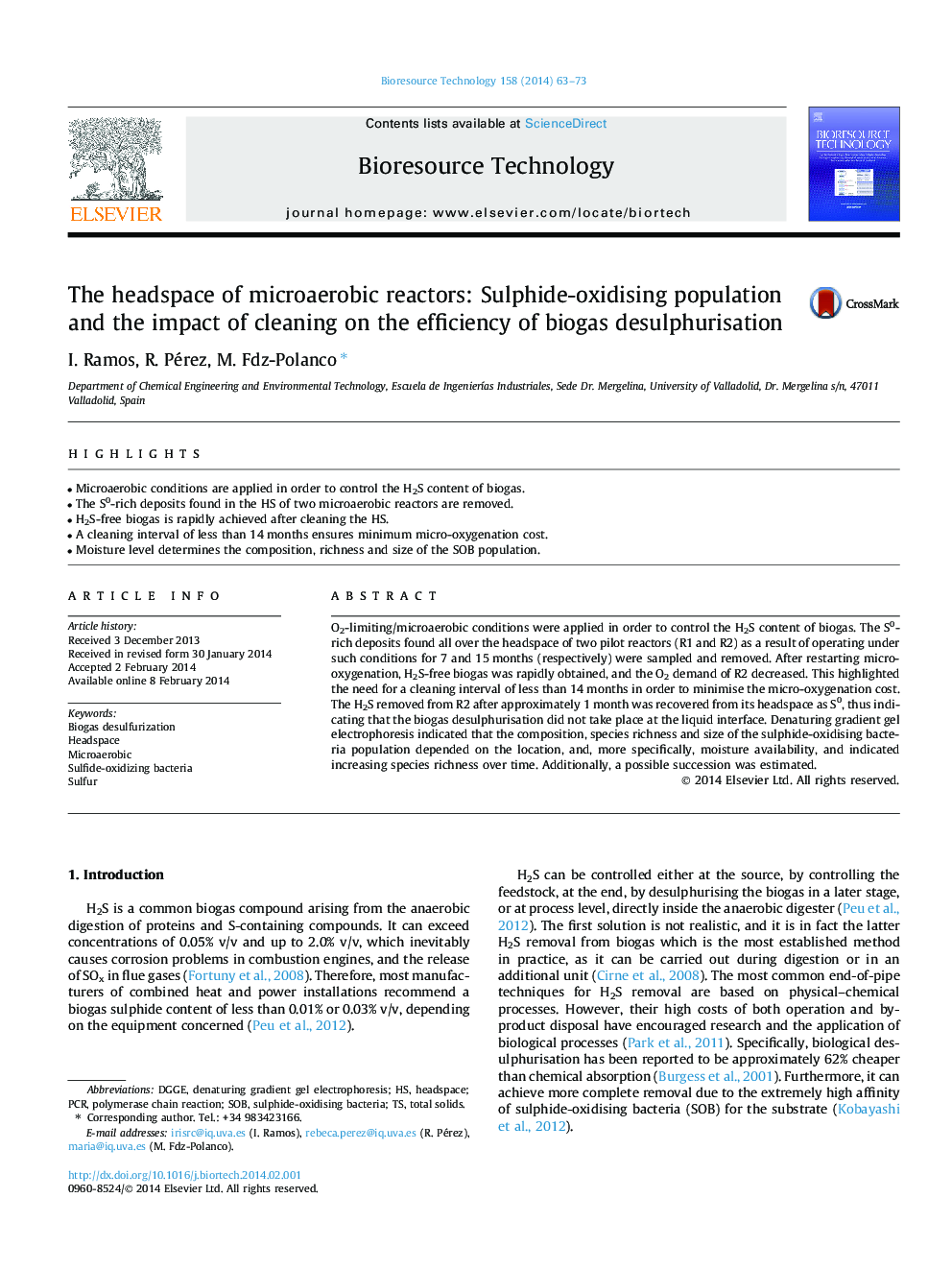| کد مقاله | کد نشریه | سال انتشار | مقاله انگلیسی | نسخه تمام متن |
|---|---|---|---|---|
| 680787 | 1459985 | 2014 | 11 صفحه PDF | دانلود رایگان |
• Microaerobic conditions are applied in order to control the H2S content of biogas.
• The S0-rich deposits found in the HS of two microaerobic reactors are removed.
• H2S-free biogas is rapidly achieved after cleaning the HS.
• A cleaning interval of less than 14 months ensures minimum micro-oxygenation cost.
• Moisture level determines the composition, richness and size of the SOB population.
O2-limiting/microaerobic conditions were applied in order to control the H2S content of biogas. The S0-rich deposits found all over the headspace of two pilot reactors (R1 and R2) as a result of operating under such conditions for 7 and 15 months (respectively) were sampled and removed. After restarting micro-oxygenation, H2S-free biogas was rapidly obtained, and the O2 demand of R2 decreased. This highlighted the need for a cleaning interval of less than 14 months in order to minimise the micro-oxygenation cost. The H2S removed from R2 after approximately 1 month was recovered from its headspace as S0, thus indicating that the biogas desulphurisation did not take place at the liquid interface. Denaturing gradient gel electrophoresis indicated that the composition, species richness and size of the sulphide-oxidising bacteria population depended on the location, and, more specifically, moisture availability, and indicated increasing species richness over time. Additionally, a possible succession was estimated.
Journal: Bioresource Technology - Volume 158, April 2014, Pages 63–73
